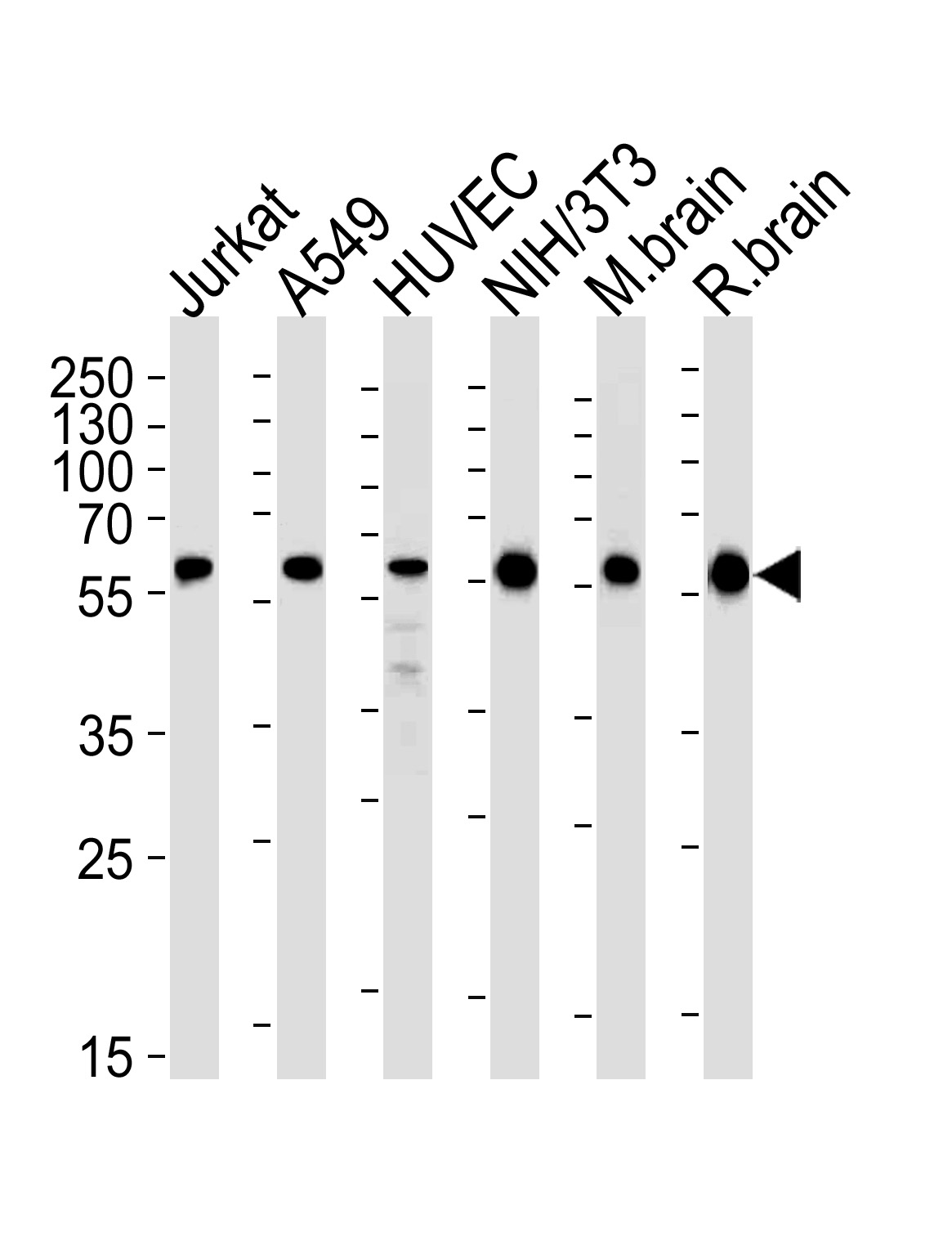
Western blot analysis of lysates from Jurkat, A549, HUVEC, mouse NIH/3T3 cell line and mouse brain, rat brain tissue lysates (from left to right), using RAD23B Antibody (N-term) (Cat. # AM2267b). AM2267b was diluted at 1:1000 at each lane. A goat anti-mouse IgG H&L(HRP) at 1:3000 dilution was used as the secondary antibody. Lysates at 35?g per lane.